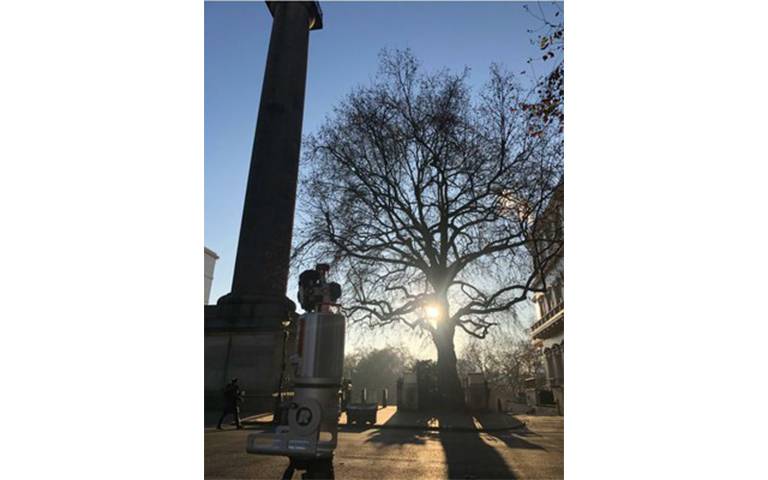Valuing the Urban Forest
31 January 2020
Mat Disney and Phil Wilkes extend applications of remote sensing

Professor Mat Disney was invited to attend a workshop on Trees as Infrastructure, organised by design team Dark Matter Labs.
Dark Matter is interested in reshaping and reframing urban design, covering issues, as they put it, of "... policy and regulation, finance and data, governance and organisational culture, identity and democratic participation". The workshop was directed to the importance of green infrastructure (trees, parks and other 'green' assets) to all aspects of urban living and better ways to assess and value it.
Mat spoke about his work with colleagues, Dr Phil Wilkes and Ollie Baines (former UCL Geography MSc Remote Sensing and Environmental Mapping student), on assessing the extent and value of urban forests.
The group has been using new open access airborne data from the UK Environment Agency, as well as EU Copernicus Sentinel data, an incredible resource of free global satellite data.
They show that tree cover in London, for example, is greater and more diverse than previously estimated. More importantly, they also show that, while tree cover is easy to explain and use, it misses many of the most valuable aspects of urban forests, which are better captured by looking at the size and shape of trees. Although everyone wants to increase tree cover, there is a lot more to it than that, as Mat expands on in a 5-minute interview he recorded with the Dark Matter Labs team at the workshop.
Mat and Phil have also been working with the UK charity Trees for Cities (TfC). TfC aims to deliver greener cities in the UK and internationally, focusing particularly on areas typically underserved with green space. They recently planted their one-millionth tree!
They have also supervised Sam Colchester, a UCL Geography MSc Geospatial Analysis student, in developing a method to allow TfC to track the status over time of their planted trees. Sam, Phil and Mat show how a combination of airborne lidar and satellite data could help TfC deliver better long-term results by identifying where their trees were thriving or not, and why. With colleagues from the NERC National Centre for Earth Observation (NCEO), Mat and Phil are also working on new ways to use these data to assess additional benefits of urban forests.
 Close
Close

